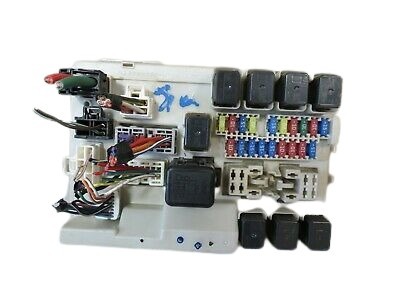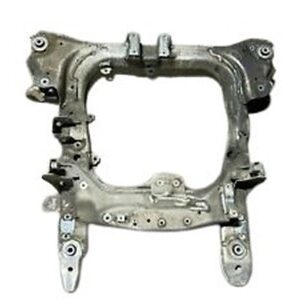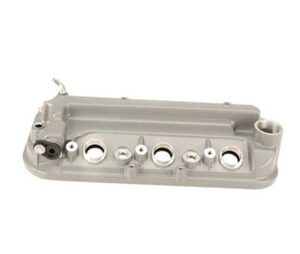Engine Fuse Box
The Engine Fuse Box is an essential component in safeguarding your vehicle’s critical electrical systems. Positioned strategically under the hood, this fuse box acts as a vigilant guardian, shielding vital engine components such as the engine control unit (ECU), cooling fan, ABS motor, and battery.
Additionally, it plays a pivotal role in securing cabin elements by protecting power windows, interior lights, radio or infotainment systems, and turn signals, all managed by the fuse box conveniently located near the dashboard.
Crafted with precision and reliability in mind, our Engine Fuse Box ensures optimal functionality and longevity. Engineered to accommodate various car models, our fuse boxes are synonymous with safety and performance.
The fuse box, fuse, fuse holder, and car fuses collectively form a robust defense system, providing peace of mind on every drive.
Trust in the durability and efficiency of our product, designed to seamlessly integrate into your vehicle’s electrical architecture.
Experience uninterrupted journeys with the confidence that your engine and cabin components are shielded by the finest automotive fuse box technology.
$200.00
CompareEngine Fuse Box
The engine fuse box, also known as the fuse panel or fuse box, is a crucial component within the engine compartment of a vehicle. It houses various fuses and relays that protect and control the electrical systems of the engine and other critical vehicle functions. By safeguarding electrical circuits from overloads and short circuits, the engine fuse box plays a vital role in maintaining the vehicle’s electrical integrity and overall safety.
Material and Construction
The engine fuse box is designed to be robust and durable to withstand the harsh conditions of the engine bay:
- Enclosure: Typically made from high-strength plastic or composite materials, the fuse box is engineered to resist heat, vibration, and moisture. This ensures that the fuses and relays remain functional and protected from the engine’s extreme operating environment.
- Internal Components: Inside the fuse box, various fuses and relays are mounted on a printed circuit board (PCB) or terminal blocks. These components are designed for durability and reliability, with secure connections to prevent accidental disconnections or failures.
- Sealing: The fuse box usually includes gaskets or seals to prevent water, dust, and debris from entering. Proper sealing is essential to protect the internal components from environmental factors and ensure long-term reliability.
Design and Functionality
The design of the engine fuse box includes several key features that contribute to its functionality:
- Fuses: The fuse box contains multiple fuses, each designed to protect a specific electrical circuit by breaking the connection if an overload occurs. Fuses are color-coded and labeled for easy identification and replacement.
- Relays: In addition to fuses, the fuse box often houses relays, which act as switches to control higher-current circuits. Relays help manage power distribution and reduce the load on switches and wiring.
- Fuse and Relay Layout: The layout of fuses and relays within the box is organized according to the vehicle’s electrical system design. A diagram or label on the cover indicates the function of each fuse and relay, making it easier for users to identify and troubleshoot electrical issues.
- Access and Removal: The fuse box is typically accessible through a removable cover, allowing users to access and replace fuses and relays as needed. The cover is designed to fit securely to protect the internal components.
Performance and Protection
The engine fuse box plays a vital role in the performance and protection of the vehicle’s electrical systems:
- Electrical Protection: By containing fuses and relays, the fuse box protects various electrical circuits from damage due to short circuits, overloads, or surges. This helps prevent electrical fires and ensures the safety of the vehicle’s electrical system.
- System Control: The relays within the fuse box help control high-current electrical systems such as the fuel pump, cooling fans, and ignition system. Proper functioning of these relays is crucial for reliable engine operation and overall vehicle performance.
- Troubleshooting: The fuse box facilitates troubleshooting by providing a central location for inspecting and replacing fuses and relays. Identifying and addressing electrical issues quickly can prevent more serious problems and maintain vehicle reliability.
Maintenance and Care
Proper maintenance and care of the engine fuse box are essential for ensuring its effectiveness and longevity:
- Regular Inspection: Periodically inspect the fuse box for signs of damage, corrosion, or wear. Check that fuses and relays are securely connected and that the cover is properly sealed.
- Fuse Replacement: Replace any blown fuses with ones of the correct amperage rating. Using fuses with incorrect ratings can lead to inadequate protection or potential damage to the electrical system.
- Relay Check: Ensure that relays are functioning correctly. If a relay fails, it may need to be replaced to restore proper operation of the associated electrical circuit.
Advanced Features and Technologies
Modern engine fuse boxes may include advanced features and technologies to enhance their functionality:
- Smart Fuses: Some fuse boxes feature smart fuses with built-in indicators that show whether a fuse is blown. These indicators can simplify troubleshooting and reduce diagnostic time.
- Integrated Circuit Protection: Advanced fuse boxes may incorporate integrated circuit protection devices that offer additional layers of safety and reliability for sensitive electronic components.
- Diagnostic Ports: In certain vehicles, the fuse box may include diagnostic ports or connections for accessing vehicle data and performing electrical system diagnostics.
Conclusion
The engine fuse box is a vital component that provides essential protection and control for a vehicle’s electrical systems. Its robust design, organized layout, and protective features ensure that electrical circuits remain safe and functional. Regular maintenance and proper care are crucial for maintaining the fuse box’s effectiveness and ensuring reliable vehicle operation. By safeguarding electrical components and facilitating troubleshooting, the engine fuse box plays a key role in the vehicle’s overall performance and safety.
Based on 0 reviews
Be the first to review “Engine Fuse Box” Cancel reply
Related products
-
Engine
6 Piece Set of Engine & amp; Transmission Motor Mounts Replacement for Honda Accord 2.4L Automatic Transmission 50870SDAA02
 Engine
Engine6 Piece Set of Engine & amp; Transmission Motor Mounts Replacement for Honda Accord 2.4L Automatic Transmission 50870SDAA02
0 out of 5(0)Introducing a 6-piece set of Engine and Transmission Motor Mounts Replacement, meticulously designed for the Honda Accord 2.4L Automatic Transmission 50870SDAA02.
Our Motor Mounts are engineered to provide superior durability and vibration dampening, enhancing the overall driving experience.
Designed to meet or exceed OEM standards, this set guarantees a seamless fit and reliable functionality.
Crafted with high-quality materials, these motor mounts ensure long-lasting performance, contributing to the smooth operation of your vehicle.
Upgrade your Honda Accord’s transmission system with confidence, knowing that our 6-piece set of Engine and Transmission Motor mount replacement delivers unmatched quality and reliability.
Trust in the precision engineering of these motor mounts to maintain the integrity of your vehicle’s drivetrain.
Elevate your driving experience with our premium replacement mounts, designed for excellence.
SKU: n/a -
Engine
Harmonic Balancer (Crank Pulley)
0 out of 5(0)The Harmonic Balancer (Crank Pulley) stands as a pivotal component in automotive engineering, seamlessly marrying functionality with precision.
Crafted from a blend of robust metal and resilient rubber, this circular device finds its purpose at the forefront of the crankshaft. Its primary role lies in the adept absorption of vibrations, ensuring a smooth and stable engine performance.
Affixed to the crank pulley, this harmonious union extends its influence to drive essential accessories such as the air conditioner, amplifying its significance in the vehicle’s functionality.
Engineered for optimal efficiency, the internal rubber composition meticulously mitigates vibrations, maintaining an equilibrium that safeguards the engine’s integrity.
The Harmonic Balancer is not just a component; it’s a testament to innovative design and reliability, ensuring your automotive experience remains harmoniously balanced.
SKU: n/a -
Engine
Engine Cradle
0 out of 5(0)An engine cradle, also known as a “subframe,” stands as a vital structural cornerstone within the realm of unibody vehicles, the prevalent architecture in contemporary passenger vehicles.
This crucial component serves as a steadfast support system for the engine, transmission, and front suspension, ensuring optimal performance and structural integrity.
Often referred to as a rolling engine stand, the engine cradle seamlessly accommodates the mounting and maneuvering of engines, embodying a pivotal role in automotive maintenance and maneuverability.
Crafted with precision and durability, our engine cradle exemplifies engineering excellence, fostering stability and longevity.
Whether you’re navigating the urban landscape or tackling rugged terrains, our versatile engine cradle assures resilience and steadfast support, regardless of your vehicle’s make or model.
Elevate your driving experience with our reliable and meticulously designed engine cradle – an epitome of automotive innovation.
SKU: n/a -
Engine
Clutch Master Cylinder
0 out of 5(0)The Clutch Master Cylinder, an integral component of hydraulic clutch systems, plays a pivotal role in transmitting force seamlessly from the clutch pedal to the slave cylinder.
Engineered with precision, this hydraulic marvel operates on a straightforward principle, ensuring optimal performance in every engagement.
The master cylinder, connected to the clutch pedal through a meticulously designed lever mechanism, exemplifies efficiency and reliability.
Crafted for compatibility with a variety of brands, our Clutch Master Cylinder stands as a testament to quality and durability.
Its robust design ensures smooth and responsive clutch operation, enhancing the overall driving experience.
Trust in the seamless functionality of our Clutch Master Cylinder, a key player in hydraulic clutch systems, designed to meet the highest standards of performance and longevity.
Elevate your driving experience with confidence, as our product guarantees precision and reliability across diverse automotive brands.
SKU: n/a -
Engine
Valve Cover
0 out of 5(0)The Valve Cover, also known as a rocker cover, stands as a crucial engine component, crafted from durable plastic or metal and securely bolted atop the cylinder head.
Its significance lies in the preservation of engine health and performance by effectively containing oil within the engine.
This integral part prevents oil leaks and ensures optimal functioning. Engineered for longevity and reliability, our valve covers are designed to meet the highest standards, catering to a wide range of vehicles, including LS models.
Each valve cover seamlessly integrates with the engine, forming a secure seal with the assistance of a high-quality valve cover gasket.
Enhance your engine’s longevity and performance with our premium valve covers a testament to precision engineering and durability.
Choose excellence for your vehicle, as our valve covers are crafted to exceed expectations, offering a perfect fit for various car models.
SKU: n/a








There are no reviews yet.